How fast will it go?
#151
Under the Lift
Lifetime Rennlist
Member
Lifetime Rennlist
Member
Tuomo:
If someone has a picture of the front of the block from below, I could point it out. Jim pointed it out to me several years ago. A light bulb went off since the filler neck seemed to be such a problem for me (and now for George), but as far as I know this has not been further investigated. Greg Brown has found that packing of oil in the heads is a problem at sustained high RPM. George may have that, but it has not lead to oil starvation or loss under ORR conditions. We ventilated the oil shrouds in the cam covers (few small holes drilled in the sides) so if the oil level in the heads rose to occlude the bottom of the shroud, they would not be sealed tubes that would drive oil out the breather openings. So far, that seems to have been adequate. I don't recall Greg reporting any issues with filler neck oil losses as George and I have had with ORR.
It would be instructive to get some pressure readings at high RPM from the breather ports.
If someone has a picture of the front of the block from below, I could point it out. Jim pointed it out to me several years ago. A light bulb went off since the filler neck seemed to be such a problem for me (and now for George), but as far as I know this has not been further investigated. Greg Brown has found that packing of oil in the heads is a problem at sustained high RPM. George may have that, but it has not lead to oil starvation or loss under ORR conditions. We ventilated the oil shrouds in the cam covers (few small holes drilled in the sides) so if the oil level in the heads rose to occlude the bottom of the shroud, they would not be sealed tubes that would drive oil out the breather openings. So far, that seems to have been adequate. I don't recall Greg reporting any issues with filler neck oil losses as George and I have had with ORR.
It would be instructive to get some pressure readings at high RPM from the breather ports.
#152
Likely best info for a new thread as this is about George and his 200MPH dash...
In terms of the oil relief opening to the crankcase, it's more of a boring tool break through from the oil passage way into the crankcase area.
I have a bare block about to go to recycling. I will try and take a couple of photos and post them, possibly with some welding rods poking through the passages. Once you see the oil flow paths, some of the issues become a "wish I had a V8" moment.
In terms of the oil relief opening to the crankcase, it's more of a boring tool break through from the oil passage way into the crankcase area.
I have a bare block about to go to recycling. I will try and take a couple of photos and post them, possibly with some welding rods poking through the passages. Once you see the oil flow paths, some of the issues become a "wish I had a V8" moment.
#153
Developer
Drain back to the pan IS feasable, even at continuous full throttle. But it requires a pump. The crankcase will have pressure, so a gravity drain back will not work.
Install a small Tilton (or similar) in the line out of the oil separator and pump it back in. Recommend you run it through an in-line oil filter on the way to the motor to de-areate the oil before it goes back in.
Works well, done it for years.
If I can find a picture of my oil separator pump install, will post it.
Install a small Tilton (or similar) in the line out of the oil separator and pump it back in. Recommend you run it through an in-line oil filter on the way to the motor to de-areate the oil before it goes back in.
Works well, done it for years.
If I can find a picture of my oil separator pump install, will post it.
#154
Former Vendor
Tuomo:
If someone has a picture of the front of the block from below, I could point it out. Jim pointed it out to me several years ago. A light bulb went off since the filler neck seemed to be such a problem for me (and now for George), but as far as I know this has not been further investigated. Greg Brown has found that packing of oil in the heads is a problem at sustained high RPM. George may have that, but it has not lead to oil starvation or loss under ORR conditions. We ventilated the oil shrouds in the cam covers (few small holes drilled in the sides) so if the oil level in the heads rose to occlude the bottom of the shroud, they would not be sealed tubes that would drive oil out the breather openings. So far, that seems to have been adequate. I don't recall Greg reporting any issues with filler neck oil losses as George and I have had with ORR.
It would be instructive to get some pressure readings at high RPM from the breather ports.
If someone has a picture of the front of the block from below, I could point it out. Jim pointed it out to me several years ago. A light bulb went off since the filler neck seemed to be such a problem for me (and now for George), but as far as I know this has not been further investigated. Greg Brown has found that packing of oil in the heads is a problem at sustained high RPM. George may have that, but it has not lead to oil starvation or loss under ORR conditions. We ventilated the oil shrouds in the cam covers (few small holes drilled in the sides) so if the oil level in the heads rose to occlude the bottom of the shroud, they would not be sealed tubes that would drive oil out the breather openings. So far, that seems to have been adequate. I don't recall Greg reporting any issues with filler neck oil losses as George and I have had with ORR.
It would be instructive to get some pressure readings at high RPM from the breather ports.
However, I assume even it gets "overwhelmed" and will finally get "packed" with oil. Looking carefully at the many different changes that Porsche made to try to ventilate this area, it is obvious that they knew this....and even more obvious that they "gave up" trying to ventilate the crankcase on the GTS models....which is why the pistons without oil drain back holes were created.
However, this is not as much a disaster as one might think.....it's only a "disaster" once the oil gets into the intake manifold or once the fluid gets dead headed or restricted.....like when you are blowing it into a catch bottle.
Once the filler neck area quits "ventilating" easily, disastrous engine damage is not far behind:
Once the filler neck area quits "moving" oil and air vapors....the oil drains from the heads will quickly start pushing air back towards the heads.....and the heads will fill with oil, keeping oil away from the oil pick-up. This has been the cause of the "end" for many, many 928 engines.
My "street ventilation" kit addresses all of these issues...plus a few others. I assume that the filler neck is eventually going to get packed with oil and quit allowing pressure to escape from the crankcase, so I feed this oil/air back into the cylinder heads. The cylinder heads/valve covers become my "oil separator". Since the crankcase can continue to "vent" through this area, the heads can continue to return oil to the crankcase....which significantly "delays" the oil retention problem inside the heads. I allow the heads to ventilate back through the upper valve cover vents, which are modified to separate oil from air. For grins, I run the ventilation hoses from the heads through a Provent, before returning the vapors to the intake manifold. However, the oil separation, in the heads, works so well that the Provent is virtually "oil free". I essentially just run it for a "final" filter, before the vapors get to the intake manifold.
Note that this system is completely "closed crankcase", like it really should be. The Federal government quit allowing engines to be vented to atmosphere in 1957.
#155
Developer
Bill and George: your catch-can filling problems are consistent with anyone who vents a supercharged engine to atmosphere and tries to race it.
For street use - no problem. But as this video shows, at full song the heads are flooded with oil and entrained air. The air-saturated oil has great cling and surface tension, and as we have discussed regards high speed cornering - the heads do not drain fast. This video is about a different topic, but still serves to show how flooded those cam covers are at full song.
The solution for me was to stop using the 4 camshaft cover vents - they are flooded and covered over at this point - and evacuate the crankcase gases through the filler neck - filler neck baffled and louvered of course to prevent wet oil sling from the crank counterweight just below it.
In addition: evacuating the catch cans to atmosphere doesn't do it - my tests showed I still gained positive pressure in the crankcase. And as you know, as the pressure builds in the case it can lift the rings off the lands and you loose some of the seal - effectively exacerbating the problem and pressurizing the crankcase even faster.
Of course, a dry sump system can pull a vacuum in your crankcase - but they are pricey. Look at a pan-o-vac system. I have used mine for 8 years now - you can pull one together for less than $100 and with no moving parts they are hard to argue with. Moroso makes the nipples and you get them at Summit or Jegs.
Basically you weld venturi nipples in your exhaust tubing that pull a vacuum on the hose you attach to them. The other end of that hose is the gas outlet from your catch can. Then you pull a better vacuum in the crankcase and you are "off to the races"!
If your catch can is instead an oil separator (Peterson builds nice ones) then you can pump the recovered oil back into the motor.
I'm swamped today so have no time to find pictures, but I have some nice pics and description of the Pan-o-Vac system in the text of the Article "Challenges When Racing a Street Vehicle - Session II" that you can download here:
http://www.928motorsports.com/install.php
I encourage you to look at crankcase ventilation as a complete system, not just a cam-cover-vent-to-catch-tank response. You will be much happier.
Hope this helps, email me if I can answer any questions.
For street use - no problem. But as this video shows, at full song the heads are flooded with oil and entrained air. The air-saturated oil has great cling and surface tension, and as we have discussed regards high speed cornering - the heads do not drain fast. This video is about a different topic, but still serves to show how flooded those cam covers are at full song.
The solution for me was to stop using the 4 camshaft cover vents - they are flooded and covered over at this point - and evacuate the crankcase gases through the filler neck - filler neck baffled and louvered of course to prevent wet oil sling from the crank counterweight just below it.
In addition: evacuating the catch cans to atmosphere doesn't do it - my tests showed I still gained positive pressure in the crankcase. And as you know, as the pressure builds in the case it can lift the rings off the lands and you loose some of the seal - effectively exacerbating the problem and pressurizing the crankcase even faster.
Of course, a dry sump system can pull a vacuum in your crankcase - but they are pricey. Look at a pan-o-vac system. I have used mine for 8 years now - you can pull one together for less than $100 and with no moving parts they are hard to argue with. Moroso makes the nipples and you get them at Summit or Jegs.
Basically you weld venturi nipples in your exhaust tubing that pull a vacuum on the hose you attach to them. The other end of that hose is the gas outlet from your catch can. Then you pull a better vacuum in the crankcase and you are "off to the races"!
If your catch can is instead an oil separator (Peterson builds nice ones) then you can pump the recovered oil back into the motor.
I'm swamped today so have no time to find pictures, but I have some nice pics and description of the Pan-o-Vac system in the text of the Article "Challenges When Racing a Street Vehicle - Session II" that you can download here:
http://www.928motorsports.com/install.php
I encourage you to look at crankcase ventilation as a complete system, not just a cam-cover-vent-to-catch-tank response. You will be much happier.
Hope this helps, email me if I can answer any questions.
#156
Under the Lift
Lifetime Rennlist
Member
Lifetime Rennlist
Member
Greg and Carl - VERY helpful information. You guys have dealt with the problem we just identified. Fortunately in the short 90 mile race, the situation created by the filler neck oil packing did not screw up the motor. We did have other venting (to atmosphere 
 ) that probably saved the motor. I do think also that Jim is onto something that contributes a lot to the packing of oil in the filler neck and we might look at some diversion of that voluminous oil spray to get it past the crank and down into the sump. Doesn't something like 1/2 the oil coming out of the pump get diverted back to the pan (unfortunately right over the crank)?
) that probably saved the motor. I do think also that Jim is onto something that contributes a lot to the packing of oil in the filler neck and we might look at some diversion of that voluminous oil spray to get it past the crank and down into the sump. Doesn't something like 1/2 the oil coming out of the pump get diverted back to the pan (unfortunately right over the crank)?

 ) that probably saved the motor. I do think also that Jim is onto something that contributes a lot to the packing of oil in the filler neck and we might look at some diversion of that voluminous oil spray to get it past the crank and down into the sump. Doesn't something like 1/2 the oil coming out of the pump get diverted back to the pan (unfortunately right over the crank)?
) that probably saved the motor. I do think also that Jim is onto something that contributes a lot to the packing of oil in the filler neck and we might look at some diversion of that voluminous oil spray to get it past the crank and down into the sump. Doesn't something like 1/2 the oil coming out of the pump get diverted back to the pan (unfortunately right over the crank)?
#157
Former Vendor
There's a whole bunch of home guys, all trying to figure this problem out, who sometimes get a "small portion" of it correct.....but mostly just repeat the same mistakes that have been made for years.
Getting a "handle" on the big picture, has been really tough. There's years of miss-information, out there, left over from the "beginning" builders of these engines, of which very few (engines) ran at all and even fewer survived for many miles.
Try to remember....Porsche, with all their engineering talent, changed the ventilation system 6 separate times (between 1987 and 1995)....and never did solve the problem.
On their "offshore" engine, they simply put a giant pan onto the engine and let the heads fill with oil.....
#158
Nordschleife Master
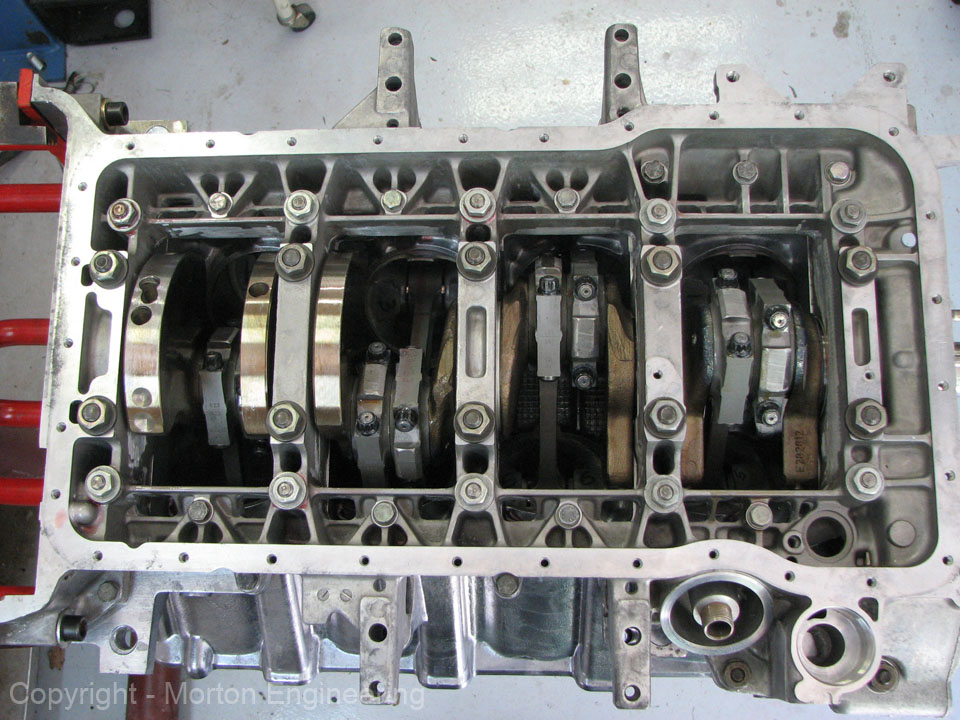
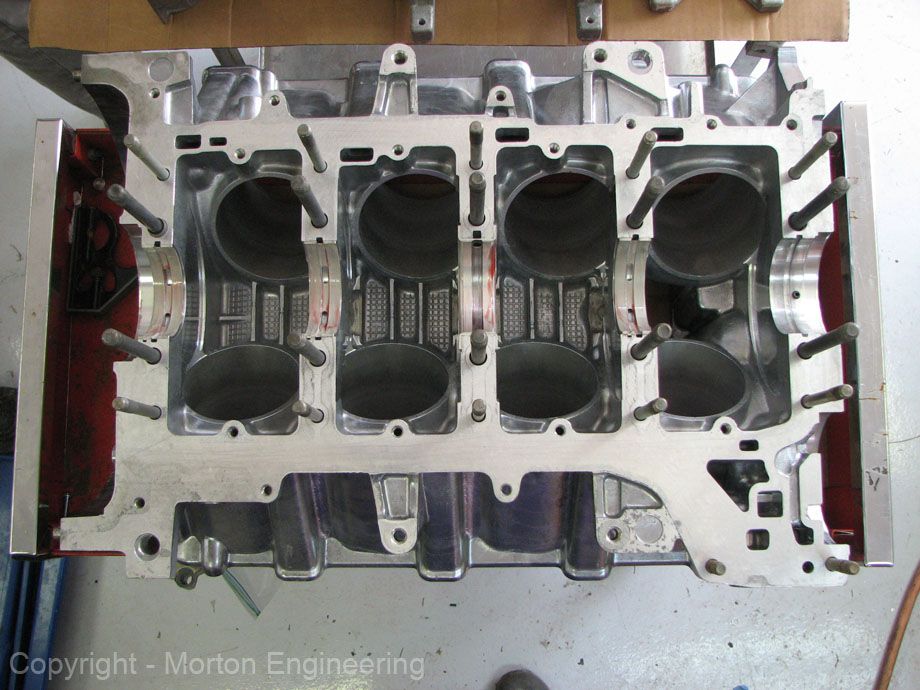
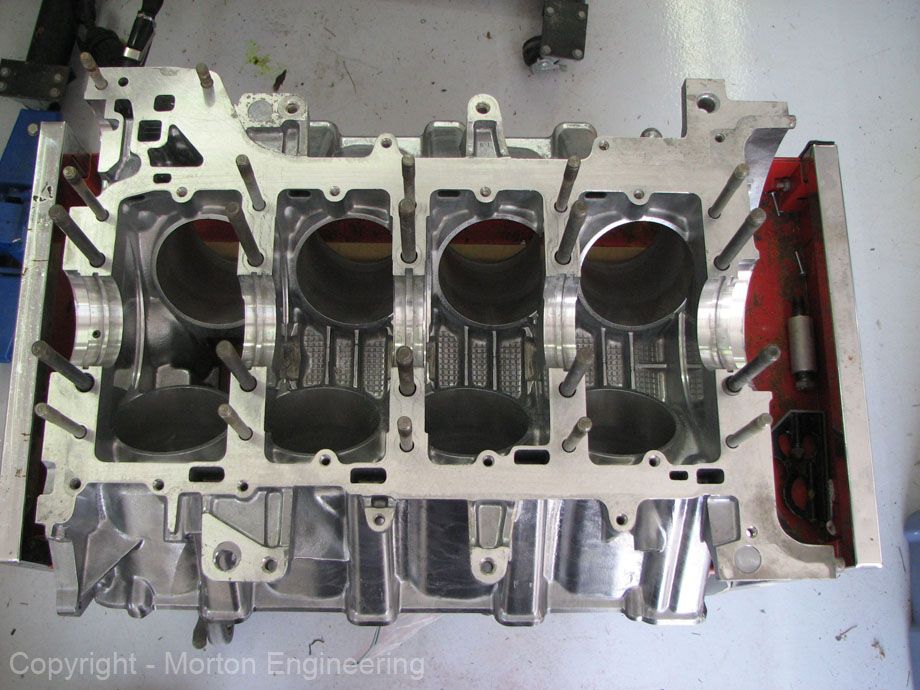
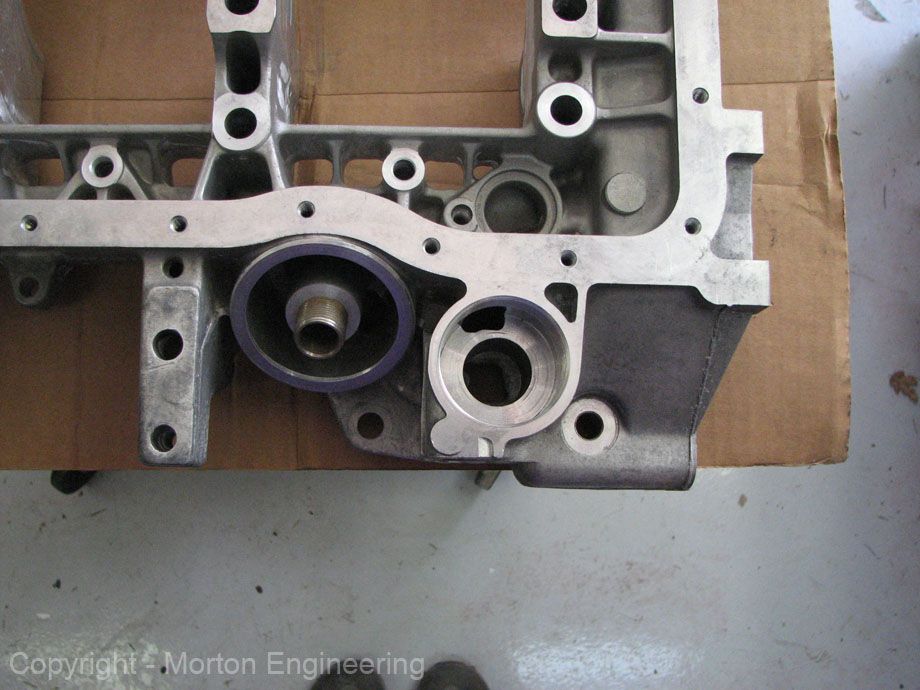
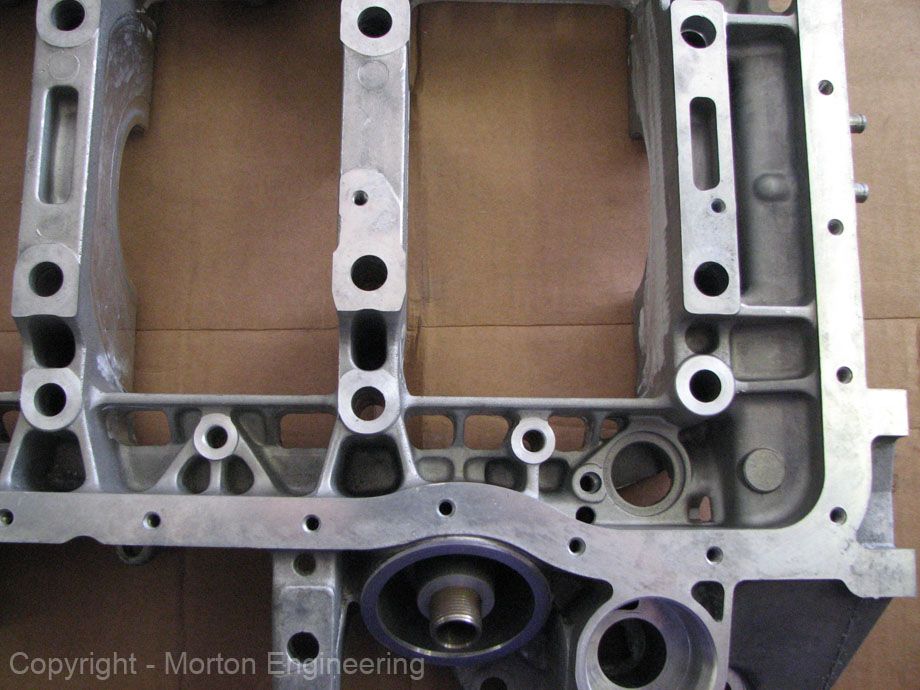
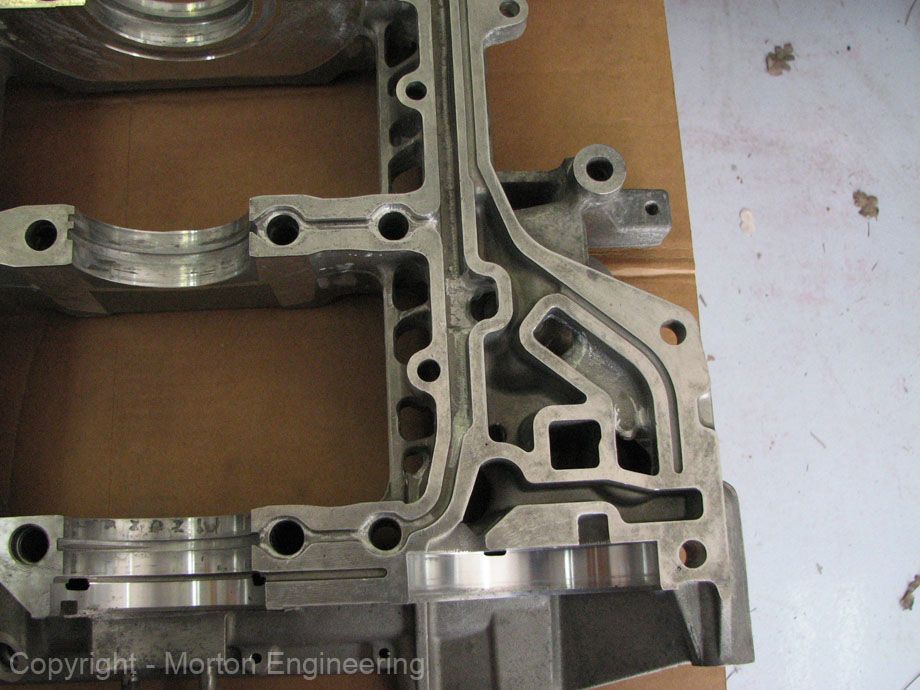
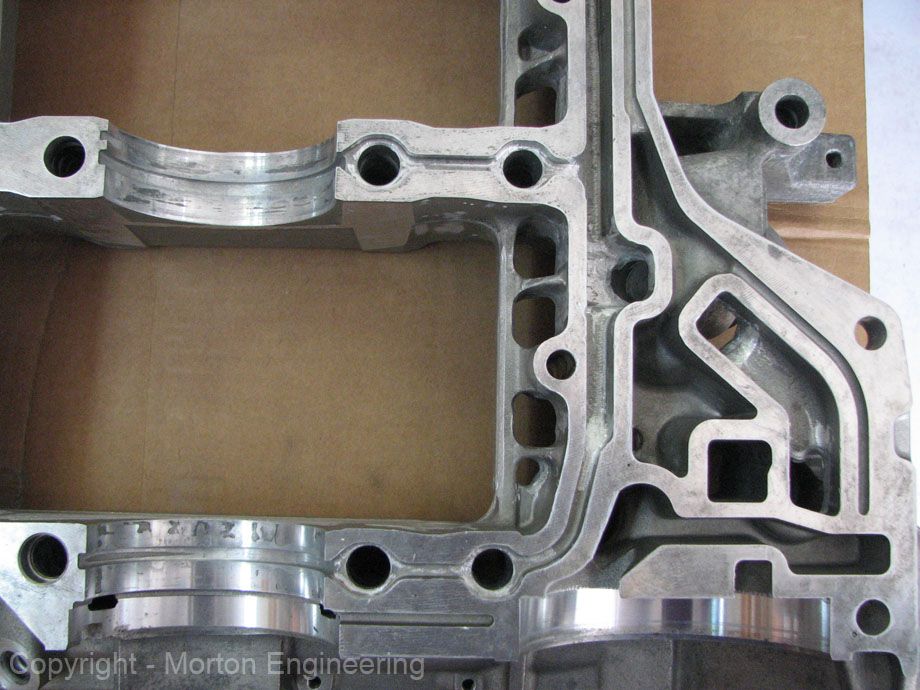
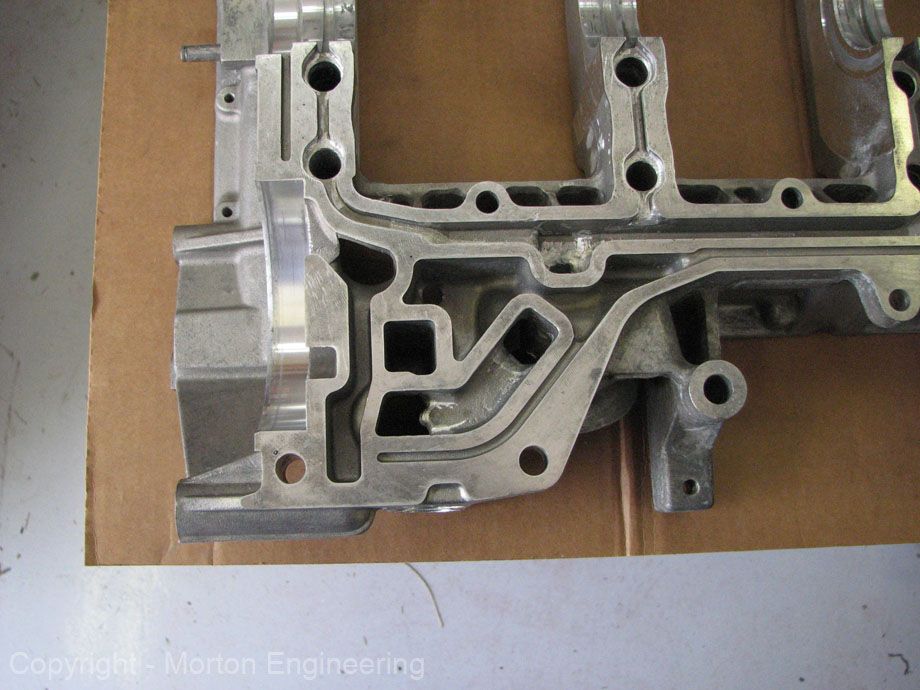
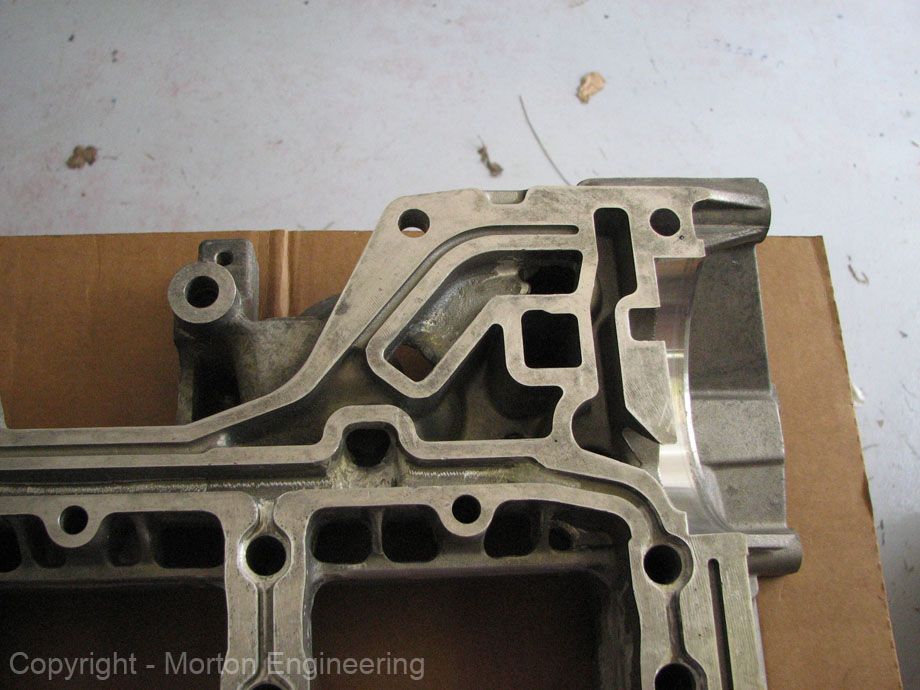
#159
Former Vendor
Can you see it in any of these photos? I looked for that bypass for an hour in a '89 block and couldn't find it. By the way, the bypassed oil will either all have to be sent to the suction side of the pump or all to back to the pan. It can't have a passage that is open to both, as the pump would suck air from the pan.
Porsche returned the "excess" oil to the crankcase in all 911 engines until 1977. They finally figured out that this was an insane thing to do....and modified the 911 engine (in 1977) to return the oil to the suction side of the pump.
#160
Under the Lift
Lifetime Rennlist
Member
Lifetime Rennlist
Member
Oh. Hmmm... I can't see it in those pictures. It was in the filler neck area over the crank. Maybe I misunderstood what this was and have this all wrong after all. If so, sorry about that. - Late Edit - Yes, I misunderstood.
#161
Under the Lift
Lifetime Rennlist
Member
Lifetime Rennlist
Member
Here's a diagram from the 85 service information technik book showing the oil pump (2) and the relief valve (4) and indicating that the output from the relief valve goes back to the pump and not the sump. Sorry for the apparent distraction.
#162
Addict
Rennlist Member
Rennlist Member
I was looking at the photos from the engine build in 2009 and noticed that I have 3R heads, so I'll have to update my memory... Anyway for those that are interested here are some photos of the build that I put in a video slideshow on Youtube:
George
90 S4 Grand Prix White (Murf #5)
94 GTS 5-Speed Midnight Blue
06 Cayenne S Havanna/Sand Beige (PASM)
http://928.jorj7.com
George
90 S4 Grand Prix White (Murf #5)
94 GTS 5-Speed Midnight Blue
06 Cayenne S Havanna/Sand Beige (PASM)
http://928.jorj7.com
#164
Race Director
the oiling system in the 928 is just fine, for the intended market the cars were sold too....think street driven with an easy life, just the occasional blast in a straight line....
However not many of US drive like that......so for our cars to survive we need to improve the system...and there are lots of different aspects that need improvement... Crankcase pressure is only one.... In my experience in my two different 16V racers the most successful answer is the "illegal" venting to atmosphere.... Neither of my racers burned much oil or "spit" anything out of the breathers...
However my application is quite a bit different than George....He is at WOT for long periods of time at high RPM.... Vs the racetrack application of WOT, then off throttle (braking) and back to WOT.... I think a vacuum pump on Georges racer would be an excellent answer...a slight HP gain & with a proper separator the oil will drop back into the crankcase.....both Doc and Colin make similar products.. of course a true dry sump is ideal, but comes at substantial costs....
However not many of US drive like that......so for our cars to survive we need to improve the system...and there are lots of different aspects that need improvement... Crankcase pressure is only one.... In my experience in my two different 16V racers the most successful answer is the "illegal" venting to atmosphere.... Neither of my racers burned much oil or "spit" anything out of the breathers...
However my application is quite a bit different than George....He is at WOT for long periods of time at high RPM.... Vs the racetrack application of WOT, then off throttle (braking) and back to WOT.... I think a vacuum pump on Georges racer would be an excellent answer...a slight HP gain & with a proper separator the oil will drop back into the crankcase.....both Doc and Colin make similar products.. of course a true dry sump is ideal, but comes at substantial costs....
#165
Addict
Rennlist Member
Rennlist Member
It's been a while, but I finally put some photos of the race on my website:
http://928.jorj7.com/2013-NORC/
George
90 S4 Grand Prix White (Murf #5)
94 GTS 5-Speed Midnight Blue
06 Cayenne S Havanna/Sand Beige (PASM)
http://928.jorj7.com
http://928.jorj7.com/2013-NORC/
George
90 S4 Grand Prix White (Murf #5)
94 GTS 5-Speed Midnight Blue
06 Cayenne S Havanna/Sand Beige (PASM)
http://928.jorj7.com


